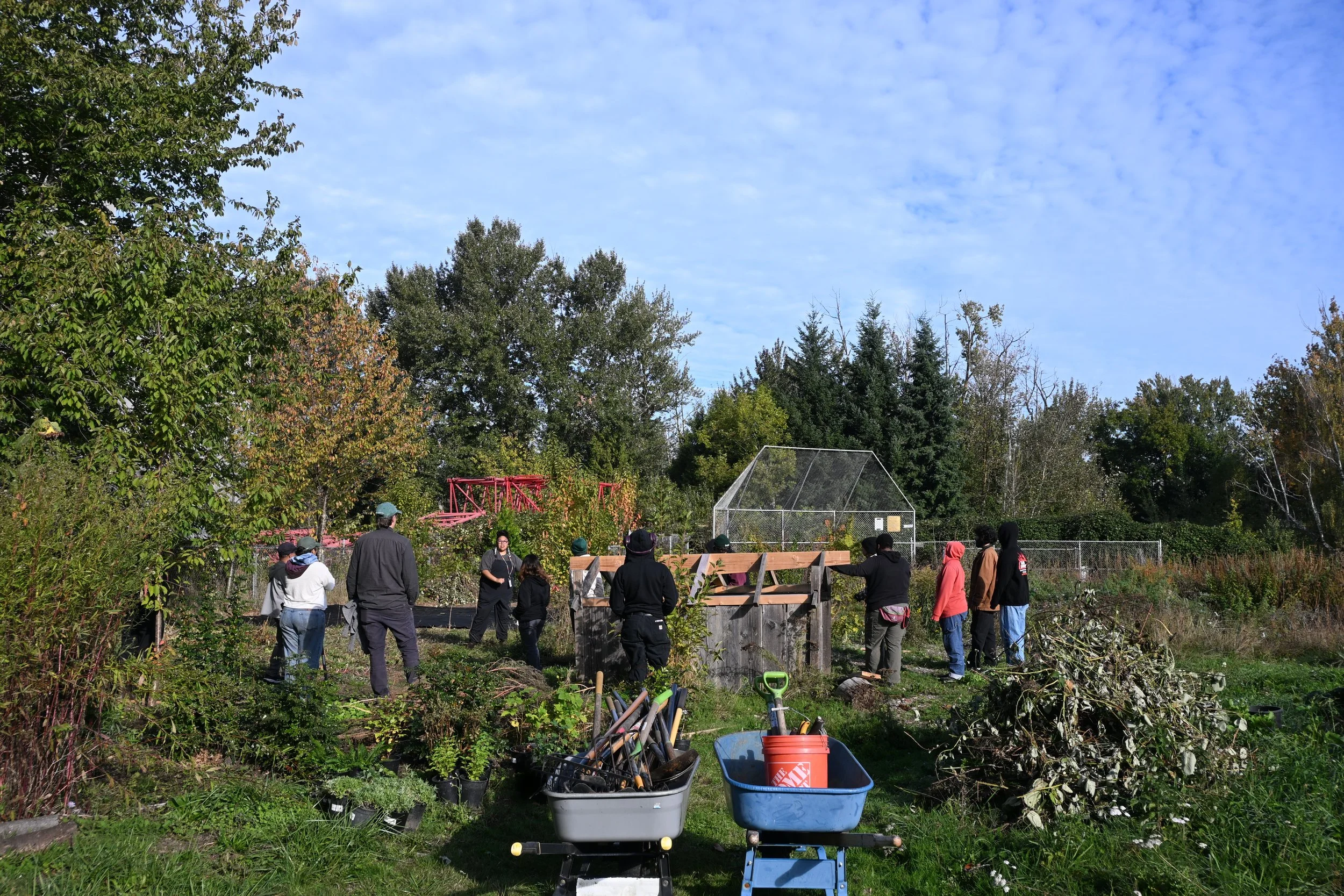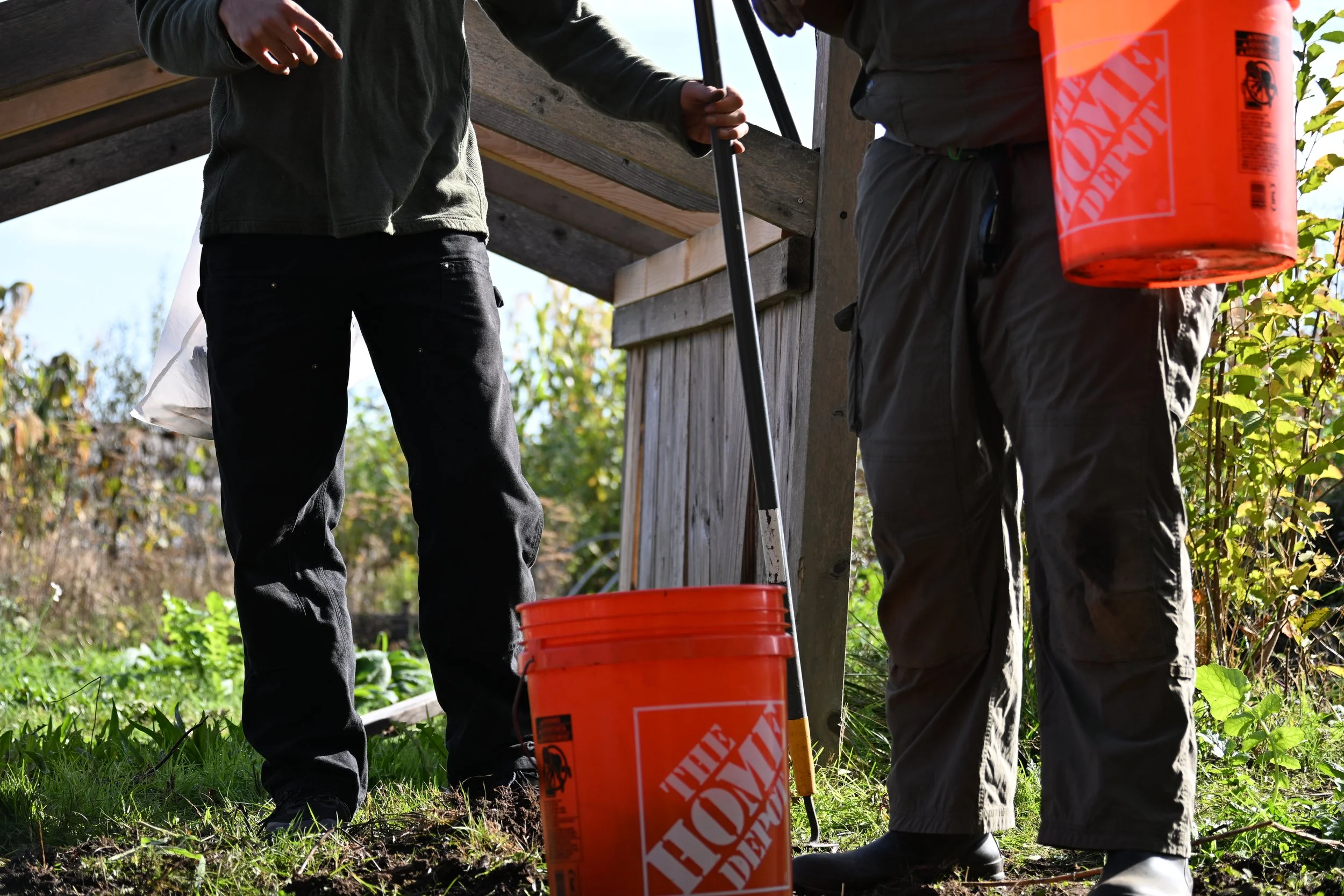Rooted in Community: Inside Verde’s Urban Habitat Program
On a crisp fall afternoon at NAYA’s garden in NE Portland , a group of interns knelt side by side, gently tucking native plants into freshly turned soil — growing both a garden and a sense of community.
The interns come from the Blueprint Foundation’s Connecting Canopies program and support Verde’s Urban Habitat program, which installs native plants and rain gardens for homeowners and community sites. The Connecting Canopies interns learn about the impacts native plant landscaping can have on our ecosystems, including creating healthy ecosystems for wildlife, reducing water consumption, and preventing toxic water runoff from entering our waterways.
After receiving training, the Connecting Canopies interns help install these green infrastructure features. This gives them on-the-job experience and training while simultaneously improving the community. It’s a win-win.
“My favorite thing is just to be able to be out here, to be with you all, and to get my hands in the dirt. I work at the computer most of the day so this is a real highlight of the season,” shared a staff member from Backyard Habitat, when asked what stood out about the program “And it is also really great to come back to spaces that we’ve worked in before. I was here when we [worked on] this space 2 years ago, and it is really amazing to see how what we did has progressed. I don’t think the cornfield was here last year so that is really breathtaking.”
Partnerships, like the one with the Blueprint Foundation, are vital to enhancing homeowners natural landscapes and improving our ecosystem. “This program is all because of collaboration!” said Raina, Verde’s Environmental Education Coordinator. “We train and work with young adult participants from Blueprint, find homes with the support of Taking Ownership PDX, share and exchange knowledge with the Columbia Slough Watershed Council and Backyard Habitat, and continue to grow our three-year-old naturescape at NAYA.”
As interns complete this program, they continue to receive support from Verde around job opportunities. They receive resources to continue to grow their knowledge about landscaping and native plants, solidifying and growing a sense of community among the participants.
During this fall session, the group planted 76 native plants in the course of 4 hours at the aforementioned NAYA location, including aster suspicata, kinnick kinnick, nootka rose, oregon grape, and more. Over the course of their 6 month program, these 8 Connecting Canopies interns have facilitated the transformation of over 3,500 square feet of urban land into climate-resilient habitats for native plants, pollinators, and wildlife. In total, Over 200 plants have been put into the ground by this cohort alone.
“One thing that I have learned is that every year, each group [of interns] is different, but the common theme is always great. Every year, we receive very nice people, and I am super happy to transfer this educational knowledge to you all. Thank you for your participation.” Said one of the managers of the program and the Education Coordinator at Verde.
Looking ahead, the Urban Habitat program is expanding its focus on hands-on environmental learning and green-jobs readiness. Upcoming plans include offering more tree-planting opportunities for homeowners, giving students and interns deeper experience in urban canopy stewardship. The program will also introduce new technical skill-building in areas such as soil analysis, blueprint reading, landscaping tools, and operating small machinery. Together, these enhancements aim to strengthen practical knowledge and open clearer pathways for youth and young adults pursuing careers in environmental and green-jobs fields.
Ultimately, the Urban Habitat program is planting more than native plants—it’s planting opportunities. Its continued growth promises a stronger, more sustainable future for local youth and their communities.




